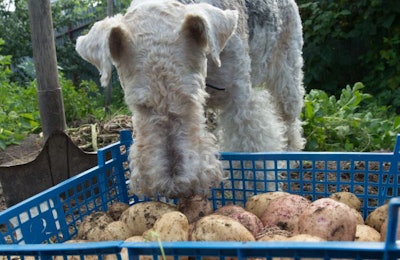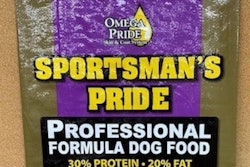
Providing empirical data to back up nutrition claims could help pet food companies avoid another situation like the U.S. Food and Drug Administration investigation into canine dilated cardiomyopathy (DCM). In his Ask the Pet Food Pro discussion, Ryan Yamka, Ph.D., founder of Luna Science and Nutrition and founder Guardian Pet Food Co., said the industry lacks transparency, saying this lay at the root of the DCM debacle.
In July 2018, the FDA alerted the public about reports of DCM in dogs eating certain pet foods containing peas, lentils, other legume seeds, or potatoes as main ingredients, which were more common in diets labeled as grain-free. A year later, the agency released data from their investigation and a graph naming 16 brands eaten by dogs involved in official reports of DCM.
Dog food nutrition analysis data transparency
Federal investigators, dog owners, journalists and others wanted brands to provide evidence of taurine levels in dog foods, nutrient digestibility and similar analysis, following the FDA announcement, Yamka said. However, the pet food industry as a whole, and the 16 brands in particular, remained largely silent.
Sales of grain-free dog food in general and those named brands in particular fell following FDA’s announcements. In response, pet food brands adapted their marketing and new dog food development. Instead of claiming that all grain in pet foods were negative, brands became “grain friendly” as they began to include ancient grains or other nontraditional grains, while continuing to malign conventional grains like wheat and corn. Likewise more new products began to include taurine and other adaptations.
Instead of leaving a gap to be filled by speculation, dog food companies could have announced to retailers and consumers that, “I feed a billion dogs a year on this food. By the way, here's my taurine analysis, here's my carnitine analysis and more importantly, here's the digestibility of the food. So, what's you are speculating is false,” Yamka said.
“Instead, everybody went silent…From that standpoint, what everyone quickly learned, retailers in particular, is that there's a lot of foods that make it to market without being properly validated or verified. Everybody quickly forgets that the AAFCO statement says this food is ‘formulated to meet.’ It doesn't say, ‘Hey, I went and analyzed it, and I ran proper digestibility and other testing to verify the food.’ Unfortunately, many companies don't do that typical nutrient analysis. They don't do digestibility testing. And so as a result, we can end up in a similar situation in the future…”
One response to the DCM situation, the rise of alternative grains, may end up repeating the problem it was meant to fix. Yamka pointed to the sudden popularity of ancient grains in the wake of the DCM investigation as another group of ingredients with the potential for a health scare due to lack of nutrition data.
“Everybody acts like ancient grains is the cure all, yet nobody has the data to demonstrate that it's better to equal to, or, or worse than what’s out there,” he said. “If you look at peer-reviewed scientific literature, it tells you ancient grains are equal to corn or less, depending on the study. A lot of companies went immediately off the fears of protecting the business and what's going on with the consumer, and they quickly launched products that aren't validated or verified. In the end, we could have another DCM like issue, but instead of talking about grain-free we could be talking about ancient grains.”
Yamka later answered a question about why ancient grains pose a risk for potential situations like that of DCM.
"Nobody has done their homework on it," he said.
For example, scientists have observed that millet is less digestible or equal to corn, Yamka said. By substituting in millet for corn, the pet food is essentially providing lower nutrient levels at higher prices.
"If pet food companies aren't doing their homework and don't understand how millet and quinoa and whatever other ancient grain they're putting in their interact, that becomes problematic."














